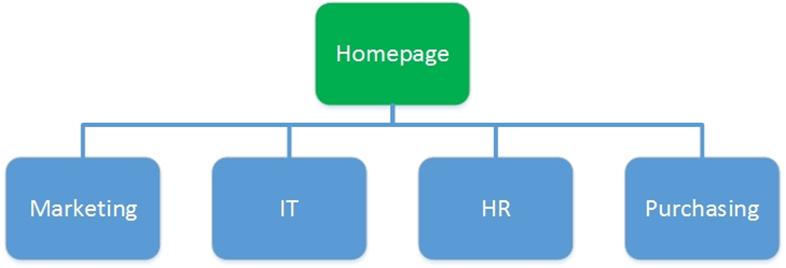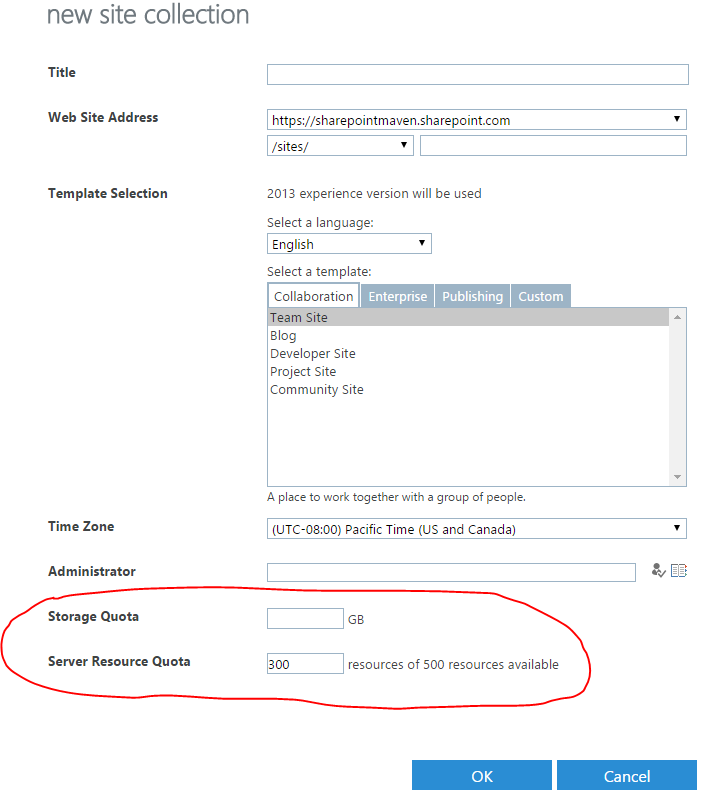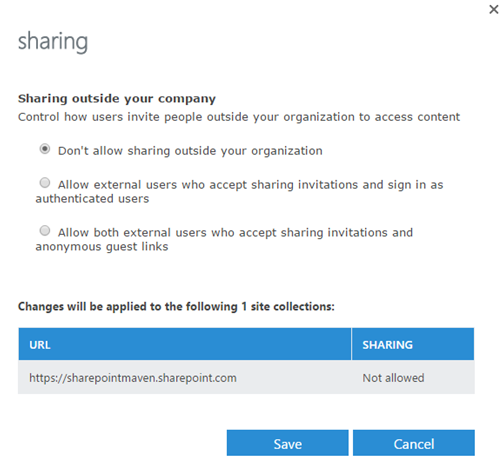Sites vs Site Collections in SharePoint
The question I always get from clients embracing their SharePoint application is whether to create a new site or a site collection for a department, project, team site or any new site request they have. The answer really depends on a variety of factors, from the business purpose of a site to the size of an organization to other unique factors. With this blog post, I hope to clarify this often confusing concept and help organizations make the correct decision.
First, let’s start off with a definition of each:
SharePoint Site is a website that contains different SharePoint Web Parts like Document Library, Calendar, Task List, etc. SharePoint sites can have 1 or more pages to display content to the user.
SharePoint Site Collection, just as the name implies, is a collection of SharePoint Sites. Each site collection contains a single top-level site and subsites below it.

In the image above, each blue box is a separate subsite, while all of the boxes combined make up a site collection.
Sites vs Site Collections: Key points to keep in mind
- One key point to note is that each site collection has its unique site columns (metadata), navigation, permissions (security groups), site templates, branding, etc. Subsites, on another hand, inherit all these properties from the top-level site in a site collection. So in other words, if you setup metadata or navigation or security groups or adjust site colors and logos on Site Collection A, you have to manually repeat all of it on Site Collection B, should you decide to proceed that route. That point alone will essentially be the decisive factor when making a decision.
- As a general rule – you are better off creating a site/subsite rather than a site collection for each site requirement that you have. The reason why you would create a separate site collection is more of an exception than the norm and some of the reasons for it are documented below.
When to create a site in SharePoint
- You are looking to create a site that needs to rely on same metadata, security or navigation as the existing sites you already have.
- You are a small organization. Unless you want to administer SharePoint on a full-time basis, just stay with 1 site collection.
- You created a template site (i.e. Project site template or department site template) and want your new site to resemble same look and feel as the rest of the sites. Site templates can only be replicated across same site collection
- You only plan to have a handful of SharePoint sites in your organization. If you plan to roll out hundreds and hundreds of sites, you might take a look at reasons below.
When to create a site collection in SharePoint
-
- You are a large organization with multiple business units and each business unit has independent and separate business functions.
- You are a large organization and each of your departments has a large number of people and each department is expected to create lots and lots of sites that do not to rely on global metadata or security groups.
- You are a large organization and want to separate your SharePoint administrative functions (have separate SharePoint administrators for each site collection)
- Your organization has lots of content (I am talking about hundreds of GB). You can allocate both server resources and storage per site collection. So if you say have a number of sites that are running server-intensive workflows or you have lots of content, you can allocate separate site collections and assign those accordingly.

- You plan to share content externally. Consider putting all your sites that are meant for external sharing in a separate site collection. For example, by default, you get 1 site collection with SharePoint Online called “yourcompany.sharepoint.com”. Don’t put your external sharing sites there. Instead, create another site collection specifically for external sharing. This way you can shut off external sharing altogether for the first site collection and prevent an “oops” moment when your users accidentally share an internal department site.

- You are looking to roll up data from across multiple sites. For example, say you have a Project Management Office (PMO) and you have all the different Project Sites and want to roll up data on some sort of dashboard – you will be better off designating a separate Site Collection for your PMO as it is easier to roll up content from single site collection, rather than a selection of sites.
So as you can see, there is really no clear cut answer. As with many situations, you have to carefully evaluate against your unique business needs. I hope you found this article useful and I hope I helped answer some of your questions.



